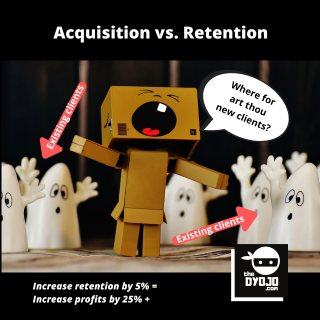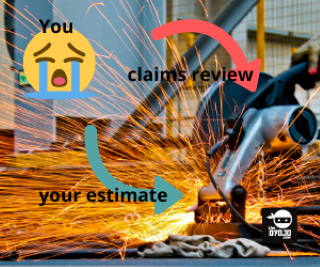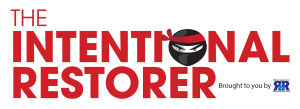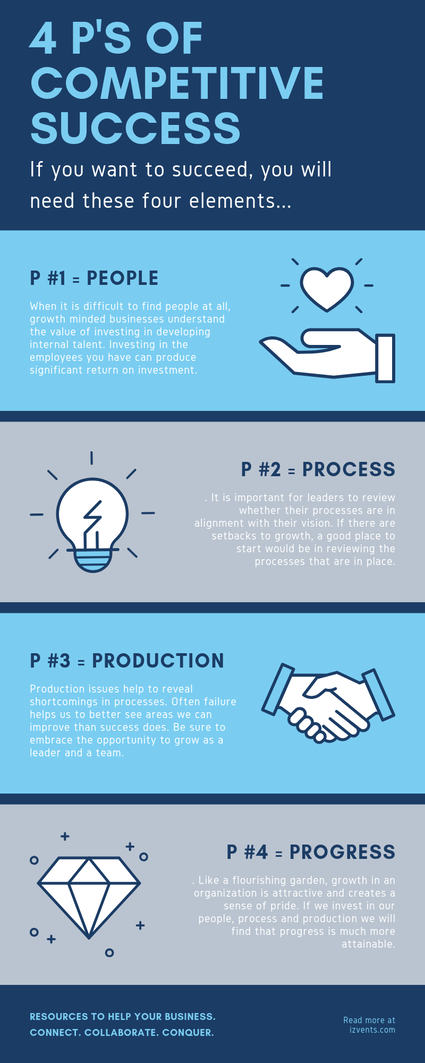While you must grow to survive, optimize your existing relationships to thrive. What does it cost you to acquire a new client? Most companies don’t track this metric. Yet, we’re not talking about most companies, we are talking about your efforts. When was the last time you hit the streets and tried to gain traction with new prospects or in a new market? It’s difficult. Sales is a process of jumping through multiple hoops to attain a small window for making an impression that could possibly, just maybe, lead to a sales opportunity. What are some of the obstacles to new client acquisition? Six keys to new client acquisition for small businesses:
Unlocking the profitability of client retention as an entrepreneur.Customer acquisition requires heavy investments of time and resources in repeated doses. If you aren’t tracking your efforts at an individual level then you are cutting yourself short of valuable data that will help you to improve your process. If you aren’t discussing wins and losses as a team then you are missing opportunities to help each other shorten the learning curve. You need to be intentional about tracking your efforts to acquire new clients so that you can adapt and achieve your goals. While you must acquire new clients to grow your business, don’t forget to double down on your customer engagement and retention endeavors. According to Studio 15 CEO Jia Wertz, who sites, in her Forbes article, a study by Bain & Company, “Increasing customer retention rates by 5% increases profits by 25% to 95%.” Developing simple, yet intentional, client engagement and retention measures can pay significant returns for your team. Simple and yet overlooked. Jia has some great recommendations, which include: Four keys to a better return on your client engagement efforts:
Tips for better returns on your marketing investments.Client acquisition is at least five times more expensive than optimizing existing customer relationships. When you operate from a collaborative position, you can find ways to build stronger relationships with your team, clients and partners. Jia shares some insight from another business leader, President of Suite 203 Communications, Lauren Cracower who shares how to win-win-win in caring for a client. “To nurture your existing clients, it’s important to be a connector for them. We always strive to strategically align our clients to suppliers, contacts or other great businesses that can help them achieve their goals.” Connect. Collaborate. Conquer.
0 Comments
Estimate reviews are part of the process in property restoration, how do we minimize our losses? Rejections sucking the blood from your estimates Rejections sucking the blood from your estimates Time is invaluable. It’s the only thing that we cannot purchase more of. In business when we are able to reduce wasted time we are able to increase our efforts in profitable endeavors. Wasted time is money bleeding out of your organization. For those who have written estimates for an insurance claim, you know what it feels like to have your line items questioned by adjusters or your estimate picked apart by claims reviewers. Property restoration contractors often perceive the claims review process as a constant bleeding out of effort, energy and sanity. It’s hard to produce for clients when you feel like you are always treating the wounded in your estimator bullpen. How often have do restoration estimators say:
Maybe this hasn’t happened to you but you’ve heard your peers complaining. Just wait, every estimator knows that their estimate will soon be the next victim of the insurance review gauntlet. The next time you send an estimate to a reviewer or hit upload in Xactimate, the process will run its vicious cycle with you. For those willing to admit it, are your bruises still turning purple or are your wounds still bleeding? We all have choices to make. We can play the status quo game and complain about the system or we can work to find answers. What would the typical response be as this scenario plays itself out?
Funny enough, this is both one of the issues as well as one of the keys to resolution as well. The person reviewing you claim has never been to this job. They typical claims reviewer works from a claims center half-way across the country. You are correct, they likely haven’t been to any job and possibly never will. It’s not their job. This is a fact of the process and it does no good to complain about it. Your roles should not put you at odds. One of you writes an estimate for the claim and the other reviews the estimate for the claim. Either of you may view your responsibilities to be at odds with each other but that is not inherent to the task at hand. The presiding principle should be to restore the client to pre-loss conditions and both parties should be working together to make this as expedient as possible. The difference between what should be and what is leaves a lot of room for us to work towards a process that is clear and consistent. As restoration professionals we can start by asking better questions.
As an estimator you have the responsibility to learn how to tell the story of the loss through the estimating tool. The estimate has a language. Whether you like it or not, for the majority of insurance claims, Xactimate has become the recognized story delivery tool. When your story does not resonate with our audience you need to learn how to communicate more clearly. In serving your client, it is necessary to use the resources in your tool bag to assist them in achieving a well executed outcome. If your estimate is not compliant with basic carrier requirements, rejection is not the result of sadism its self-sabotage. How do contractors gain ground in the claims review process?
Start the process of reviewing your rejections for trends. You can do this as a team or you can do this as an individual estimator. To assist you with collecting data we have developed a FREE PDF download -Tracking Claims Review Worksheet. Gathering this information will help you to make informed decisions about your process, adjustments for your team’s approach as well data to discuss with adjusters, claims reviewers or carriers.
Resources for estimators, managers and adjusters composing estimates in Xactimate:
 Coffee is king when meeting new clients Coffee is king when meeting new clients If you have a prospective client that you would like to get to know, coffee is a great neutral ground (pun). Most people like coffee and if your client doesn’t like coffee that should be reason enough to move along. So, how do you do it? How do you get millions of dollars in new business by simply buying someone an overpriced cup-of-Joe? With our proven multi-step process you will improve your close ratio by fractions of a percent - and there’s more. Step 1: To getting more coffee client appointmentsKeep it simple. Funny enough, early in my career I thought it was important to share my resume in a conversational email. Using my background in criminal justice, I deduced that most people were indifferent to my impressive list of marginal accomplishments. I further gathered that there was a direct relationship between the length of the email and the rejection rate of my requests. Keep your request simple. If people are interested they will look you up on LinkedIn or ask around. You don’t need to tell them your life story or make an impassioned pleas for why they should choose contestant number 3. Step 2: For achieving higher success rates in client prospecting with coffeeBe specific. Rather than an open ended invite to coffee at a place of their choosing at some future date, pick a place and a time. It may seem intrusive to invite Jane Doe to the Bestest Java on Wednesday at 930 AM but I believe it is actually quite polite. By providing a place and time you aren’t wasting their time searching the whole of their calendar and thinking through when would be best for them. You also increase the probability that they actually check their calendar. “Is it even possible for me, Jane Doe, to meet at the Bestest Java on Wednesday at 930 AM?” It simplifies the process. They can say yes. They can say no. Or they can say, "Actually Thursday at 830 AM would be better." Additional Tips: For guaranteed improvements to your client coffee outreachI promised there would be more. Here it is. Additional tips: 1. Most people like to try new things. If there is a new place use that as a reason to invite them. 2. Experiment with taste and location. If your prospect has a specific coffee taste, using a specific place may allow them to suggest a different location. I have some people who like Fast food chain coffee and others who stick with the known names. There have been plenty of times when when clients have said, “I’ve never been there.” 3. If they can’t find the time, offer to bring coffee to them and/or their team. When you get your coffee meet up on the books, do as much research as you can to enable you to make an initial impression. Don’t over do it but come prepared. It is polite, professional and effective to know some basics about your prospect. 4. Make it about them. If this is an initial invite you should plan to keep things primarily personal, get to know the person and work to earn their trust. Most people want to have a sense of whether they know, like and trust you before they will do business. 5. Ask questions and get them talking. This is both polite and Sales 101. It is ok to go the whole meeting and not talk about yourself. Typically if you are genuinely interested there will come an opportunity where your guest will ask you, “So, what is it that you do?” 6. Be prepared to respond. Practice makes perfect. Whether you are new to sales or meeting a client for the first time. Do some base level research as well as some role play in how you think the conversation might go. Be prepared to keep it light but never be caught off guard if the client is ready to dig into the business relationship. If you work through scenarios prior to the meeting you will be better prepared to seem confident rather than desperate when the time comes to discuss your products and/or services. Don't forget to thank us when you increase your close rate on client coffee meetings
When inviting another professional to coffee - keep it simple, don’t waste time, be specific and be genuine. I’ll guarantee that this is more effective than being complicated, wasting time, being generic and doing the typical sales routine. If you haven’t increased your close ratio by fractions of a percent, we will give you your money back. Let us know if you’ve had 10’s of more coffee appointments by using these ultra secret steps to maximum success.  Interested in business and leadership concepts presented in a comic strip style format? You may find some encouragement in our latest series The Modern Leader: Loyalty, a four page presentation of perspectives on how to compete in the modern workplace. When leaders embrace the challenges of an ever evolving modern working environment they can win internally (workplace) as well as externally (marketplace).
As Jim Collins noted in Good To Great, you need to get the right people on the bus [your organization] and you need to ensure they are in the right seats on the bus. When it is difficult to find people at all, growth minded businesses understand the value of investing in developing internal talent. Investing in the employees you have can produce significant return on investment. Whether you are an entrepreneur or a person in a position of leadership at the helm of a large organization, attracting good talent starts with:
Key to Success: ProcessProcess. Culture and systems have to be in sync with each other for a company to succeed. While culture is a hot topic, it is more about what an organization does than what it says it will do. It is important for entrepreneurs and leadership teams to review whether their processes are in alignment with their vision. If there are setbacks to growth, a good place to start would be in reviewing the processes that are in place. Developing systems helps to ensure that there is consistency in your organization. Clarifying expectations helps team members to understand what they need to do in order to succeed. Communicating processes that are consistent with the vision enable everyone to see where they can help move things forward. Key to Success: ProductionProduction. A company has to produce goods and/or services. Having the right people and processes completes the cycle of needs to ensure an organization will create value through production. Production issues help to reveal shortcomings in processes. Often failure helps us to better see areas we can improve than success does. Be sure to embrace the opportunity to grow as a leader and a team. Production, process and people all work together to create progress. If you are struggling to make progress start to work backwards to determine areas that need to be addressed. Here is a good resources from EOS on how to trace down issues and establish better meetings: Key to Success: ProgressProgress. Having the right people, developing your processes and improving production are all keys to success. There is no guarantee for success. There are no short cuts to success. Leaders can learn a lot from gardening on how to cultivate a growing team. In an article published with Restoration and Remediation Magazine, we identified keys to change for withering grass, flowering weeds and crab grass within an organization. Like a flourishing garden, growth in an organization is attractive and creates a sense of pride. If we invest in our people, process and production we will find that progress is much more attainable. As the organization moves forward together it is easier to identify and address areas of the company that need to be adjusted. Progress is not perfection. Progress means we are gaining on our goals.
|
AuthorThoughts on personal and professional development. Jon Isaacson, The Intentional Restorer, is a contractor, author, and host of The DYOJO Podcast. The goal of The DYOJO is to help growth-minded restoration professionals shorten their DANG learning curve for personal and professional development. You can watch The DYOJO Podcast on YouTube on Thursdays or listen on your favorite podcast platform.
Archives
March 2023
Categories
All
<script type="text/javascript" src="//downloads.mailchimp.com/js/signup-forms/popup/unique-methods/embed.js" data-dojo-config="usePlainJson: true, isDebug: false"></script><script type="text/javascript">window.dojoRequire(["mojo/signup-forms/Loader"], function(L) { L.start({"baseUrl":"mc.us5.list-manage.com","uuid":"b9016446bd3c6a9f0bd835d4e","lid":"83282ffb9e","uniqueMethods":true}) })</script>
|
||||||||
Jon Isaacson |
Connect. Collaborate. Conquer.
© COPYRIGHT 2015. ALL RIGHTS RESERVED.
|









 RSS Feed
RSS Feed